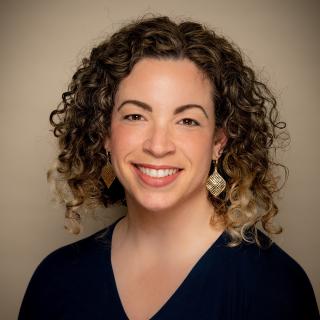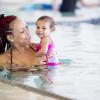 It’s hard to think logically about tragedy. The emotions overwhelm us, and as parents we go into a fight-or-flight state: Our hearts seize as we contemplate our own children being hurt or harmed; our pulse races; we look for the fast exit from the reality of our own inadequacies when it comes to keeping our families safe and making the world OK.
It’s hard to think logically about tragedy. The emotions overwhelm us, and as parents we go into a fight-or-flight state: Our hearts seize as we contemplate our own children being hurt or harmed; our pulse races; we look for the fast exit from the reality of our own inadequacies when it comes to keeping our families safe and making the world OK.
Many parents around the country will feel this way, this weekend, when we remember with deep sadness and anguish the shooting of 20 children and six women in Newtown, Conn., on Dec. 14, 2012. In my home, it’s the kind of thing we can barely speak of, even away from the children’s earshot, in broken whispers under king-sized covers. It’s the fear hardly utterable, the act that can’t be named, the what if.
What if …
And yet. Here we are, left with that terrifying what if but also with that inescapable, human task of comforting each other, of finding hope amid despair.
It’s hard to think logically about tragedy, but time makes space for action. While families and communities must observe the reminder of tragedy in their own ways, I humbly offer three ideas that might help you cope, find solace in action, and help others in acute need. These are the actions I have chosen to take within my own family and community, the best way that I know how, as a mother, to focus in the face of the very hardest things.
Help kids in grief
Many millions of dollars have been donated to Newtown families and community organizations in the wake of the shooting. Those dollars have and will pay for the important work of healing and support. Newtown still needs our help, but so do thousands and thousands of children in every community around the country who cope with the many lasting effects of grief, whether from mass tragedy, domestic violence, illness or poverty.
This year I became acquainted with an incredible nonprofit that everyone should know about, but not enough people do. Art With Heart was founded in Seattle 2002 to help support the emotional well-being and promote the healing process of children affected by hardship.

With the help of hundreds of professional artists and illustrators, Art With Heart produces incredibly beautiful art books for kids of all ages. These publications look like really cool activity books and journals, but they secretly incorporate cutting-edge therapeutic practices to help kids cope and heal. Oodles of Doodles, for example, is geared toward younger kids who are hospitalized, offering a collection of artistic activities that promote stress relief, combat boredom and give kids a safe place to express their fears. Another book, Ink About It, combines therapeutic writing and art prompts to help struggling tweens and teens explore and express their feelings and adapt social and emotional skills.
Why does this project matter to every one of us, struggling or not?
“Little people who are traumatized often become big people who traumatize others,” said Steffanie Lorig, Art With Heart’s founder.
Studies show that at least one in five children and adolescents suffer from a mental health disorder. Of this number, only 20 percent receive the mental health services they need; 80 percent are left behind.
These books, and the therapy they promote, help kids release pain and not carry it into adulthood. Lorig says that 80,000 kids in Washington alone could use these books, but her organization can only help 15,000 with its current budget.
Art With Heart leaders also train other professionals to utilize the books and materials as curriculum to help children in distress. They recently traveled to Newtown to arm therapists, counselors and teens there with books, curriculum and training to help with the long work of healing. One thousand Newtown kids now have these books. One 13-year-old boy who received a book called the journals “a cure to all our sadness.”
Art With Heart books make meaningful gifts for kids in crisis and also for kids struggling with everyday challenges.
Learn more about Art With Heart's connection to Newtown in this video. Can you support this effort by donating, or giving any of these incredible books as gifts to kids?
Act with courage
At ParentMap, we are making 2014 the year of gun sense. We have committed to bringing our readers content focused on the intersection of guns, violence and families. We are telling the stories of families and guns. We are inviting voices to be heard. We are proudly supporting I-594.
Certainly tighter gun-control and increased safety measures — such as universal background checks, lock laws, and the ability for law enforcement to seize weapons from an individual who has been served with a protection order — will not prevent every gun death. There are many steps to decreasing gun deaths, from sensible gun legislation to broader mental illness services to smarter parenting. No single solution will necessarily prevent a first grader from being shot in her classroom or a mother being shot by her husband.
We have all heard the “guns don’t kill people, people kill people” mantra.
That’s just wordplay. Let’s try it this way: Guns enable people to kill people easily. Too many children have died by guns since the Sandy Hook tragedy — in accidental shootings, domestic violence murders, and self-inflicted tragedies (of 194 shootings reported in the media and tracked by Mother Jones, 127 children died in their own homes; 52 involving a gun left unsecured). But even this, the exact number of deaths by gun violence, is hard to count because of reporting inconsistencies and lack of centralized data. For a visual of the sheer volume of life lost to guns this year (estimated to be over 33,000 people), see Slate's crowdsourced tally project.
It's estimated that 2,700 children have been killed by guns in the U.S. in the year since the Sandy Hook massacre. That is the equivalent of 135 Sandy Hooks just this past year.
Yet in the 12 months since the shooting at Sandy Hook Elementary School, almost every state has enacted at least one new gun law. Nearly two-thirds of the new laws ease restrictions and expand the rights of gun owners.
As parents we can impact these statistics by displaying the courage to advocate for sensible gun laws, by being aware of our children’s access to weapons, and by doing everything in our power to keep guns out of the hands of minors and of adultswho will not use them responsibly.
If you believe that guns are too often used to hurt innocent people and children, if you believe kids have access to guns that they should not have access to, then act with courage this year. You do not have to march in Olympia or Washington, D.C., (life is busy, we know).
But consider signing a petition (and then advocating, between now and November 2014, for the voter passage of universal background checks); joining the conversation about violence in your school or community; raising the issue in your own family. Ask about guns in the homes where your child plays. Speak out for safer, saner gun rules. Think hard about the role of violence in our culture and the messages that kids receive on their screens and in their media.
Just be
This one is easy, and I don’t have to tell you how to do it. Sometimes, too often, I forget: Slow down, unplug, check in with my kids and my partner. Appreciate the blessed fact that we are all here, OK.
Just be.
Today, my daughter drew the picture at the top of this post, "my picture of 20 children and their teacher," she called it. She doesn't know about Sandy Hook; we felt it too much terror to tell our children last year and haven't since.
"Why 20?" I asked, a little shaky.
"That's the size of a class," she replied, a bit bewildered by the fragile expression in my eyes.
"What happened to the one lying on the ground?" I asked her, holding my breath. Had she somehow learned of Sandy Hook, been traumatized without us knowing?
"She's doing a cartwheel," my daughter said.
Just be.
It sounds woo-woo and kind of preachy as I write it, but then I remember that too-familiar feeling. The something-is-wrong feeling; the world-will-never-be-the-same feeling. And I look at my children, the precious curves of their faces as soft and sweet as the cheeks of those 20 other children, of every single, precious kid who deserves everything good in the world.
And I pull them to me, so that, for now, we can just be.
 In between school drop-offs and coffee binges, Natalie Singer-Velush is ParentMap’s Managing Editor. She lives in Seattle with her husband and their two school-aged daughters.
In between school drop-offs and coffee binges, Natalie Singer-Velush is ParentMap’s Managing Editor. She lives in Seattle with her husband and their two school-aged daughters.











